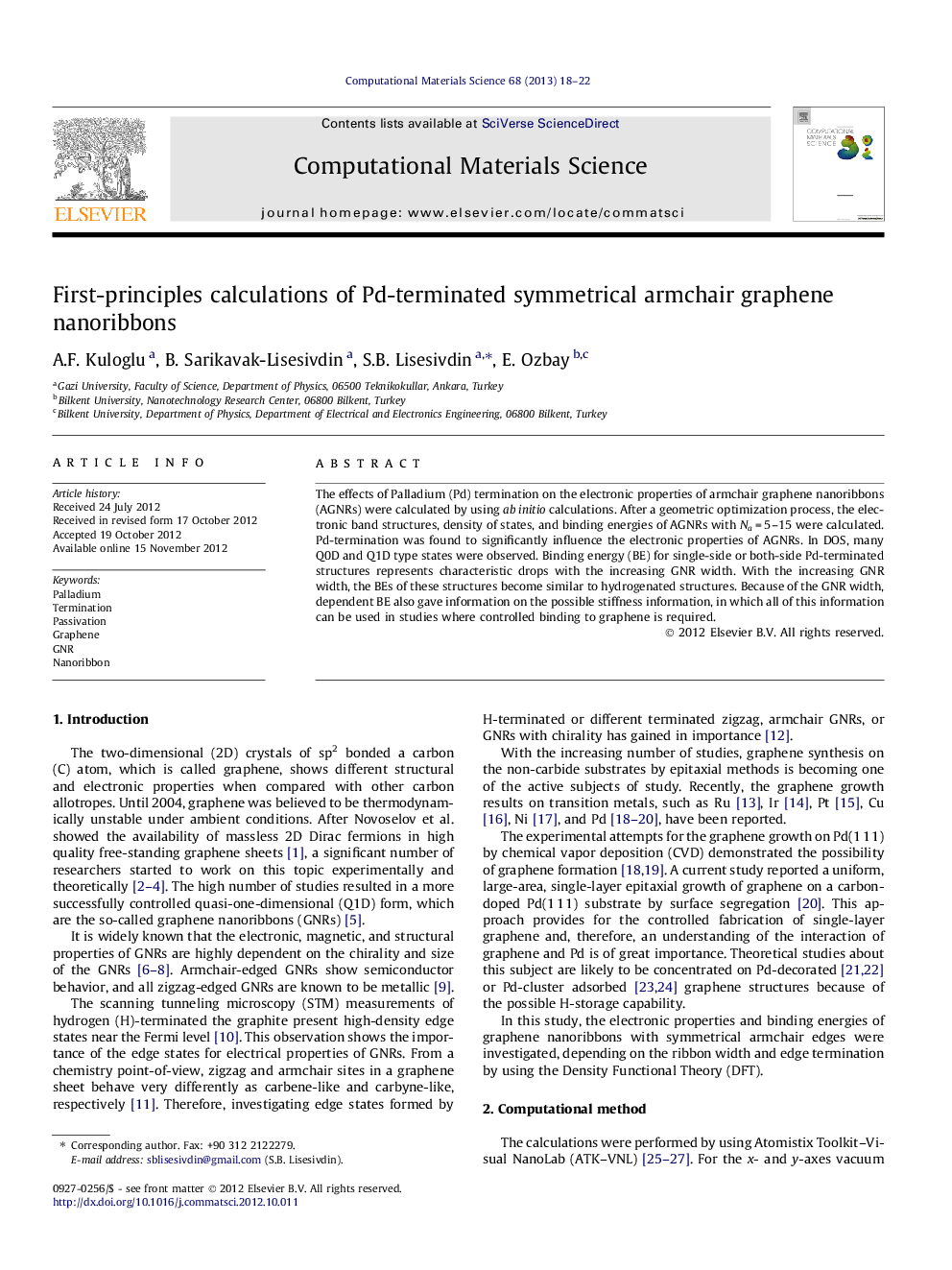| Article ID | Journal | Published Year | Pages | File Type |
|---|---|---|---|---|
| 1561317 | Computational Materials Science | 2013 | 5 Pages |
The effects of Palladium (Pd) termination on the electronic properties of armchair graphene nanoribbons (AGNRs) were calculated by using ab initio calculations. After a geometric optimization process, the electronic band structures, density of states, and binding energies of AGNRs with Na = 5–15 were calculated. Pd-termination was found to significantly influence the electronic properties of AGNRs. In DOS, many Q0D and Q1D type states were observed. Binding energy (BE) for single-side or both-side Pd-terminated structures represents characteristic drops with the increasing GNR width. With the increasing GNR width, the BEs of these structures become similar to hydrogenated structures. Because of the GNR width, dependent BE also gave information on the possible stiffness information, in which all of this information can be used in studies where controlled binding to graphene is required.
► Pd-termination significantly influence the electronic properties of armchair graphene nanoribbons, and induce metallicity. ► In density of states, many quasi-0D and quasi-1D type states are found to be induced in addition to dominant 1D states. ► Binding energy for H–C–Pd and Pd–C–Pd structures represent characteristic drops with the increasing graphene nanoribbon width.
